The vibrant blue tarantula, with its striking coloration and fascinating behavior, has become an increasingly popular pet choice for enthusiasts. This guide provides a comprehensive overview of how to care for a blue tarantula, covering everything from selecting a healthy specimen to creating the perfect habitat and ensuring its well-being. Whether you’re a first-time tarantula owner or looking to expand your knowledge, this article offers essential information to help you succeed in providing a thriving environment for your captivating blue tarantula.
Choosing Your Blue Tarantula
The first step in owning a blue tarantula is choosing the right one. This involves understanding where to acquire your pet and how to identify a healthy specimen. Careful selection ensures you start with a tarantula that is likely to thrive in your care. Researching different species and their specific needs is crucial. Some blue tarantulas may require slightly different conditions than others, so knowing the specific species you’re considering is essential. This research phase is also an excellent opportunity to learn more about their natural habitats and behaviors, which can help you create an environment that closely mimics their natural needs. Choosing a blue tarantula is a journey, and understanding their needs is the first step.
Where to Buy a Blue Tarantula
Blue tarantulas can be found through various sources, each with its advantages and disadvantages. Reputable breeders are often the best source, as they usually have extensive knowledge about the species and can provide healthy, well-cared-for tarantulas. Local reptile and exotic pet stores can also be an option, but it’s essential to check their reputation and the conditions in which they keep their animals. Online marketplaces and classified ads offer a wide selection, but they require caution; always check seller reviews and ensure the tarantula is being shipped humanely. Always prioritize sources that can provide health guarantees and offer guidance for beginners. Before purchasing, always check the tarantula and ensure that you are completely satisfied with its condition and overall appearance.
Identifying a Healthy Blue Tarantula
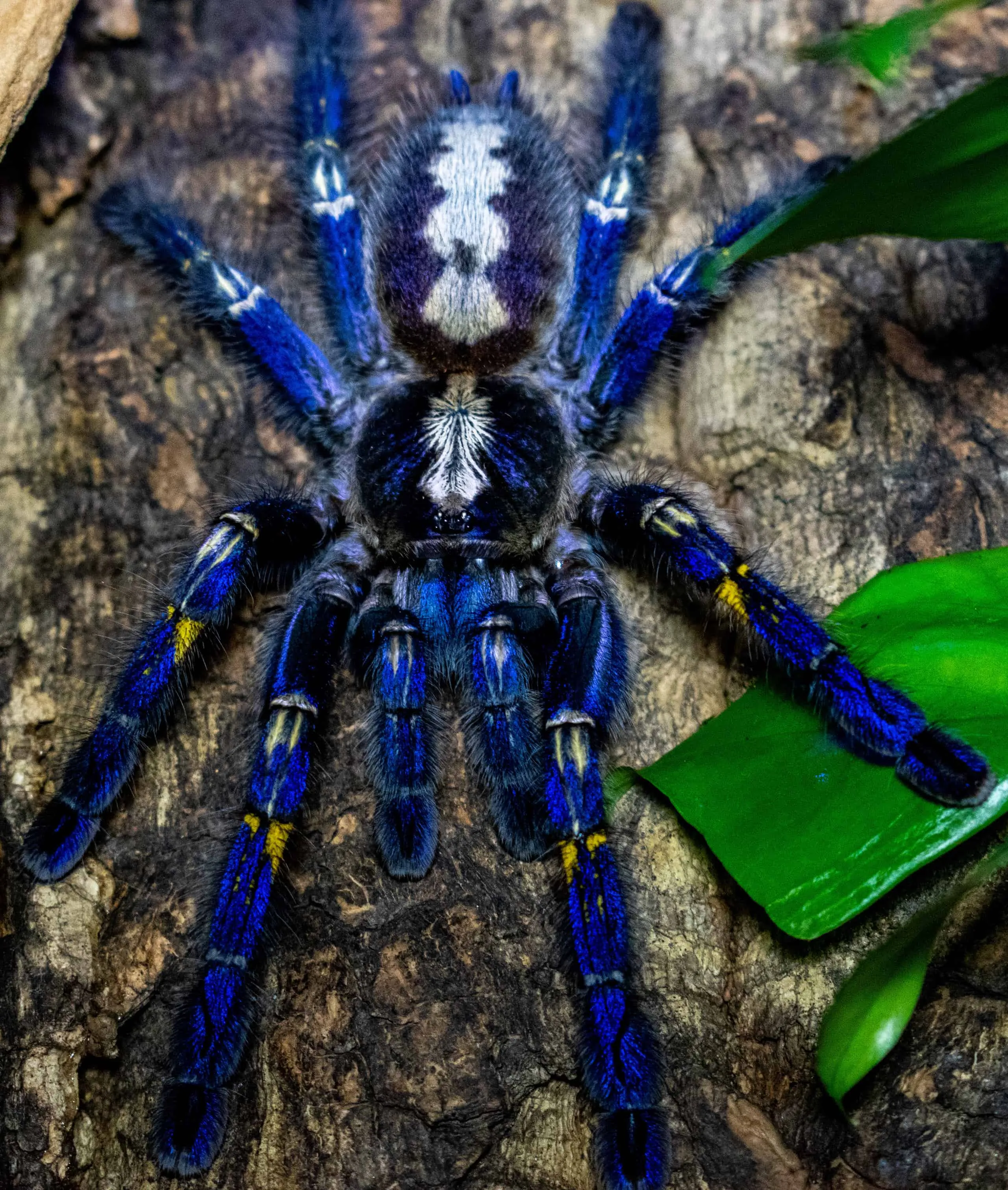
When selecting a blue tarantula, several signs indicate good health. Look for a tarantula with a plump abdomen, not a shriveled one, which could indicate dehydration or malnutrition. The tarantula should be alert and responsive to its surroundings, showing signs of curiosity rather than lethargy. The legs should be intact, and the tarantula should move confidently. Avoid tarantulas that appear sluggish, have missing limbs, or show signs of parasites. A healthy tarantula will have a bright, vibrant color, though this can vary slightly depending on the species and molt cycle. Always observe the tarantula’s behavior and appearance before making a purchase, and don’t hesitate to ask the seller about its feeding habits and overall care. Remember that a little research before buying can save you from major issues down the line.
Setting Up the Perfect Enclosure
Creating the right enclosure is vital for your blue tarantula’s well-being. The habitat should mimic its natural environment as closely as possible to ensure your tarantula feels safe, secure, and comfortable. A properly set-up enclosure will not only provide the necessary conditions for survival but will also encourage natural behaviors. This includes opportunities for burrowing, climbing, and maintaining the ideal temperature and humidity levels. A well-designed enclosure will also make it easier to observe your tarantula without disturbing it and will allow for efficient cleaning and maintenance.
Enclosure Size and Type
The size and type of enclosure depend on the tarantula’s size and species. A good rule of thumb is to provide an enclosure that is at least twice the tarantula’s leg span in width. For terrestrial species, a wider enclosure is preferable, whereas arboreal species benefit from taller enclosures to facilitate climbing. Glass or acrylic terrariums with secure lids are generally recommended, as they provide good visibility and are easy to clean. Ensure the lid is escape-proof, as tarantulas can be surprisingly adept at squeezing through small openings. Proper ventilation is critical; the enclosure should have ventilation holes to allow for air circulation and prevent the build-up of humidity, which can cause mold and other issues.
Substrate Selection
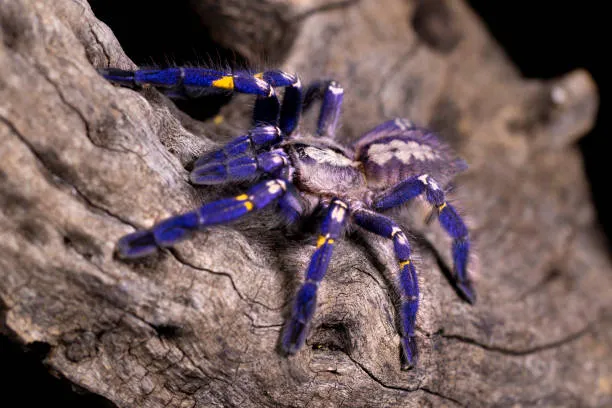
The substrate is the bottom layer of the enclosure and is essential for moisture retention, providing a surface for burrowing, and promoting a sense of security for your tarantula. The ideal substrate for a blue tarantula should retain moisture while also allowing for adequate ventilation. A mix of substrate is an excellent choice; peat moss, coconut fiber, and vermiculite are popular options. These substrates offer excellent moisture retention and allow the tarantula to burrow. Avoid using substrates that can be toxic or irritating, such as cedar or pine shavings. The depth of the substrate should be sufficient to allow the tarantula to burrow comfortably, typically at least 4–6 inches for terrestrial species. Regular cleaning and replacement of the substrate are necessary to maintain a healthy environment.
Temperature and Humidity Control
Maintaining the correct temperature and humidity levels is crucial for your blue tarantula’s health. Most blue tarantulas thrive in temperatures between 75–85°F (24–29°C). Using a heat mat placed on the side of the enclosure can provide a gentle heat source. Avoid placing the heat mat directly under the enclosure, as this can cause the substrate to dry out too quickly. Humidity levels should be kept between 60–70%. You can monitor humidity using a hygrometer, and achieve the appropriate level by misting the enclosure with water, especially during molting cycles. Good ventilation helps to prevent mold and fungal growth, which can be detrimental to your tarantula’s health. Adjusting the temperature and humidity as needed will help to keep your tarantula happy and healthy.
Feeding Your Blue Tarantula
Proper nutrition is crucial for your blue tarantula’s growth, health, and overall well-being. Understanding what to feed your tarantula, how often, and how to provide water is essential to ensuring it thrives. A balanced diet will support healthy molting and sustain its vibrant coloration. Careful attention to feeding habits helps to create a well-balanced and thriving ecosystem in your pet’s enclosure. The size and age of your blue tarantula should be considered while preparing a diet plan. Regular feeding and a clean water supply will help your tarantula to live a long and healthy life.
What to Feed Your Tarantula
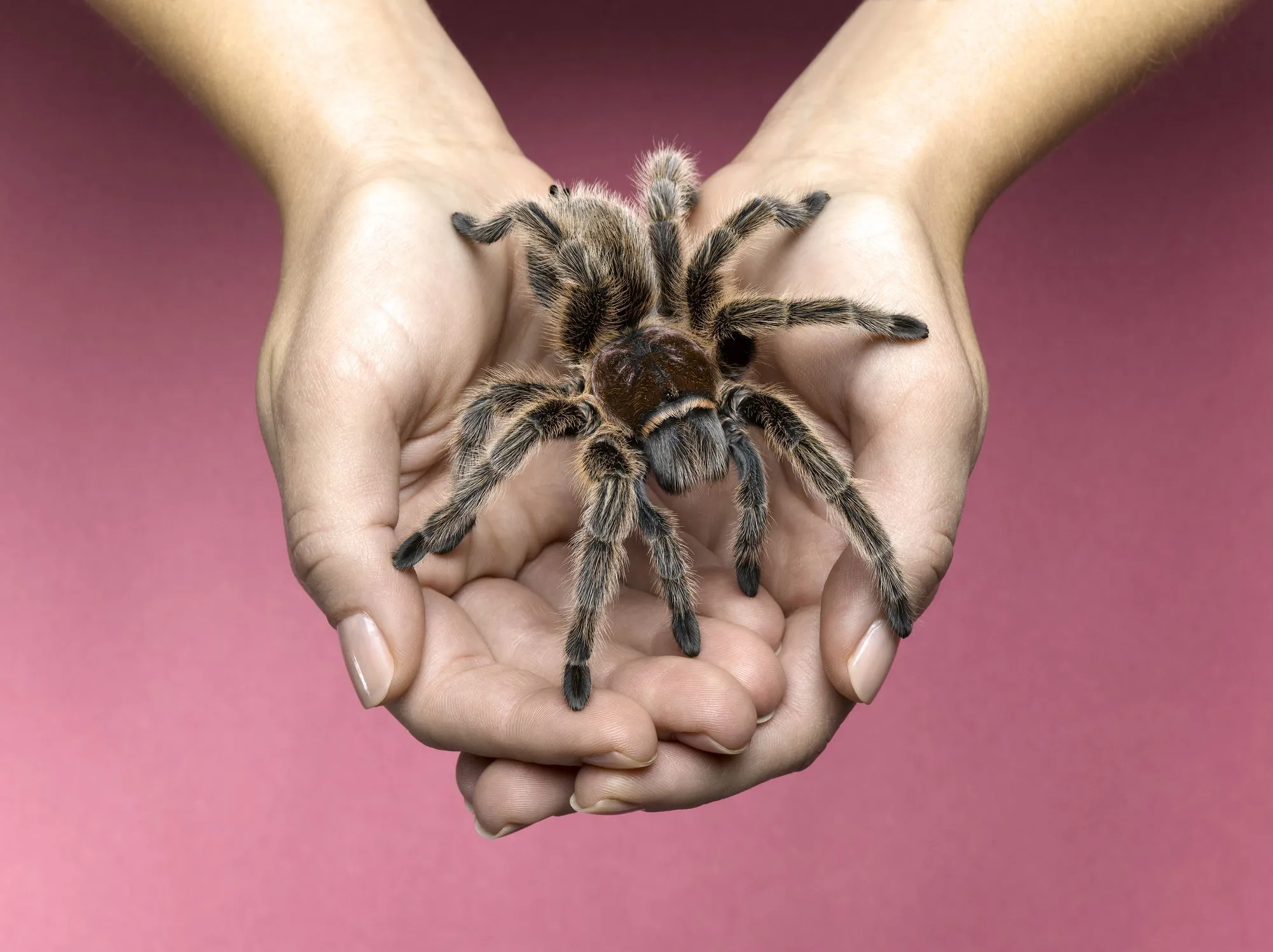
The primary diet of a blue tarantula consists of live insects. Crickets, mealworms, and roaches are standard food items. Ensure the insects you offer are gut-loaded, which means feeding them nutritious food a day or two before feeding them to your tarantula. This ensures your tarantula receives the maximum nutrients. The size of the prey should be appropriate for the tarantula’s size; a general rule is to provide insects no larger than the tarantula’s body length. Avoid feeding your tarantula wild-caught insects, as they may carry parasites or pesticides. Variety in the diet is also essential, so offering different types of insects from time to time can provide a wider range of nutrients and keep your tarantula engaged.
Feeding Frequency
The feeding frequency depends on the tarantula’s age and growth rate. Spiderlings (young tarantulas) should be fed more frequently, typically 2–3 times a week. As the tarantula matures, you can reduce the feeding frequency to once or twice a week. Observe your tarantula’s feeding behavior; if it consistently refuses food, it may be in pre-molt. Remove any uneaten insects within 24 hours to prevent them from stressing or harming your tarantula. Adjust the feeding schedule according to the tarantula’s needs and growth stage. A healthy tarantula will usually have a good appetite. Make sure to avoid overfeeding as this may lead to health problems for your tarantula.
Providing Water
Clean water is essential for your blue tarantula’s hydration. Always provide fresh water in a shallow dish that is easily accessible and cannot be tipped over. The water dish should be shallow enough that the tarantula can easily reach it without risk of drowning. Replace the water regularly, usually every few days, to prevent the growth of bacteria and other contaminants. For smaller tarantulas, a water source can be provided using a cotton ball or a sponge that is kept moist, as small tarantulas may have trouble drinking from a dish. Monitoring water levels is crucial, especially during molting, as adequate hydration helps the tarantula shed its exoskeleton properly. Always keep water fresh and clean.
Handling and Interaction
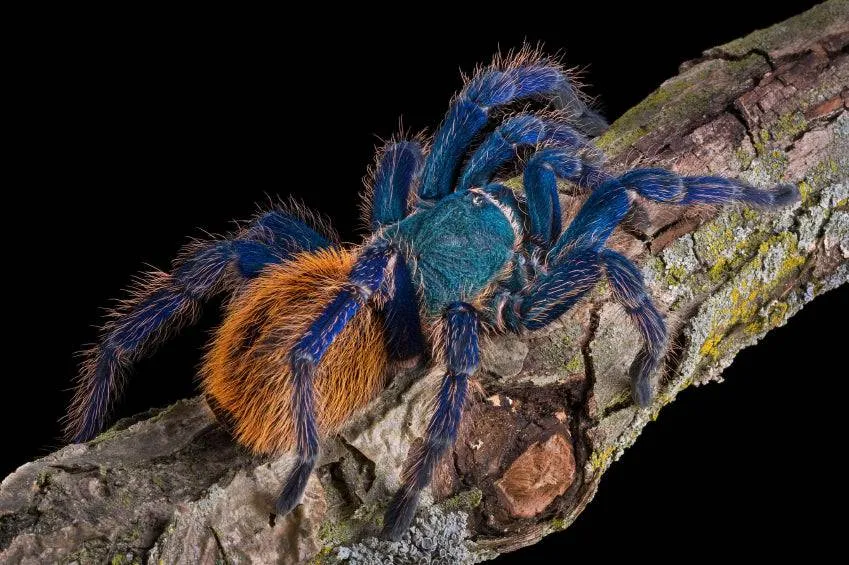
Handling a blue tarantula should be approached with caution. While some individuals may be more docile than others, all tarantulas possess the potential to bite or flick urticating hairs. Safe handling techniques, understanding tarantula behavior, and providing appropriate interactions are vital for both your safety and the tarantula’s well-being. Proper handling helps to prevent accidental injury to both the owner and the tarantula. Respecting the tarantula’s space and understanding its behaviors are essential steps.
Safe Handling Techniques
If you choose to handle your blue tarantula, do so with extreme care. Avoid handling your tarantula unnecessarily, as it can stress the animal. Handle them when the tarantula is calm and not in a defensive posture. Always handle over a soft surface, such as a bed or a carpet, in case the tarantula falls. Wash your hands thoroughly before and after handling, and avoid using scented soaps, lotions, or perfumes. Gently encourage the tarantula to walk onto your hand, and support its body to prevent falls. Never grab or squeeze the tarantula; its delicate exoskeleton can be easily damaged. Stay calm and avoid sudden movements; any quick action could frighten the tarantula and cause it to react defensively. Never put a tarantula on a child’s shoulder, since this is both dangerous and not recommended.
Understanding Tarantula Behavior
Understanding tarantula behavior is key to safe handling. Tarantulas may exhibit defensive behaviors, such as raising their front legs or flicking urticating hairs. If a tarantula displays these signs, it’s best to leave it alone. Learn to recognize the signs of stress, such as rapid movement or hiding. Many tarantulas are not very interested in being handled. They generally prefer to be left alone in their enclosures. Observe your tarantula’s behaviors in the enclosure to determine its comfort level. A relaxed tarantula will move slowly and explore its surroundings. Regular observation helps you to learn your tarantula’s personality, which can help you determine whether it is safe to handle or not.
Health and Common Problems
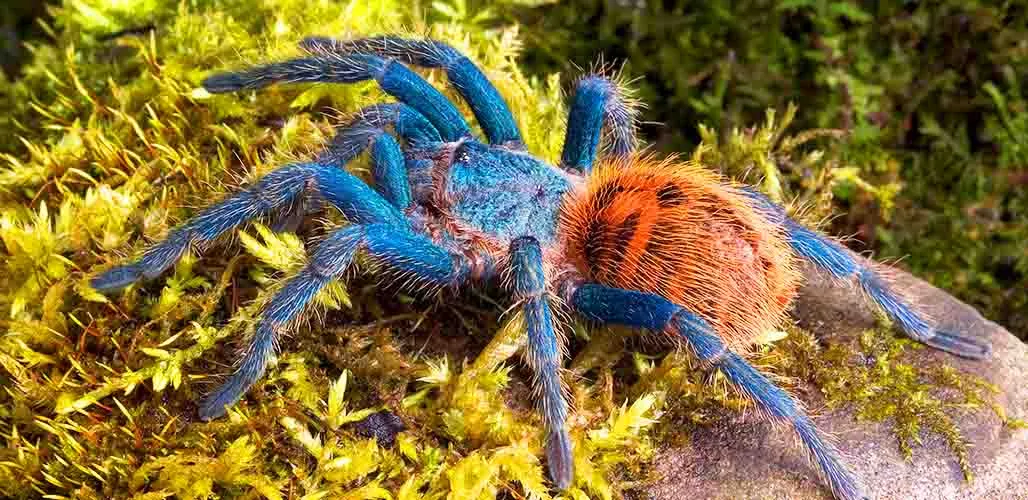
Like all pets, blue tarantulas can experience health issues. Recognizing common health problems and understanding preventative care are crucial to ensuring your tarantula lives a long and healthy life. Being proactive in observing your pet for signs of illness is essential. Regular checks and providing the correct environmental conditions can minimize the risks of health issues. Careful management of the enclosure, diet, and handling practices will help to avoid many of the common issues. Addressing any issues promptly can prevent them from escalating into more severe problems.
Identifying Common Health Issues
Some common health issues that can affect blue tarantulas include dehydration, parasites, and infections. Dehydration can be identified by a shriveled abdomen and lethargy. Parasites can be indicated by unusual behavior or appearance. Fungal infections can appear as discolored patches on the tarantula’s body or legs. Molting problems can also occur if humidity levels are too low. If you notice any of these signs, isolate the tarantula if necessary and consult with a veterinarian or experienced tarantula keeper. Early detection and treatment are crucial. The enclosure should be regularly checked for molds or pests. Make sure to monitor the tarantula’s overall appearance.
Preventative Care and Veterinary Visits
Preventative care is critical to maintaining your blue tarantula’s health. Ensure the enclosure is kept clean and the humidity and temperature levels are appropriate. Provide a varied diet and clean water at all times. Regular cleaning of the enclosure and substrate is essential to prevent the build-up of harmful bacteria. While specialized veterinarians for tarantulas are not always readily available, seek advice from experienced tarantula keepers if you suspect a health problem. A veterinarian can provide guidance on the care of your tarantula. Creating a safe and stress-free environment will go a long way to ensuring that your blue tarantula lives a long and healthy life.
Caring for a blue tarantula can be a rewarding experience, providing a unique insight into the world of exotic pets. By following the guidelines outlined in this article, you can create a thriving environment for your tarantula, ensuring it remains healthy, happy, and vibrant. Remember, patience, observation, and a commitment to providing the best possible care are the keys to success. Enjoy the fascinating world of blue tarantula keeping!
